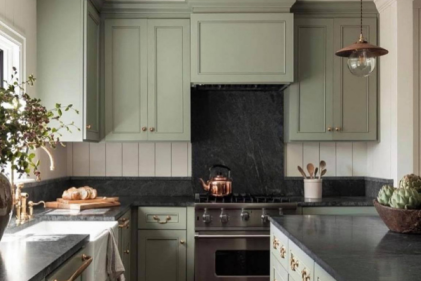Bicarbonate of soda and white vinegar used to be the main active ingredients in household cleaners until the 1950's. In modern homes there are gallons of highly toxic substances in bottles and containers – most of them are used in cleaners. At any given time, modern homes contain over a thousand different toxins mixed together. Around 150 chemicals in the average home are known to cause cancer, birth defects, allergies and psychological abnormalities. The following common items are used as examples:
Metal polishes and adhesive removers contain petroleum distillates. Exposure causes temporary clouding of the eyes. Long-term exposure can cause damage to the kidneys, eyes, skin and nervous system. Phenol and cresol are used in conventional disinfectants. These compounds are corrosive and can cause dizziness, fainting, diarrhoea, along with damage to the kidneys and liver. Nitrobenzene is present in furniture and floor polish. High exposure can cause skin discolouration, shallow breathing, vomiting, and even death. It has also been linked to cancer and birth defects.
Personal care products such as body soaps, deodorants and aftershaves are not subject to stringent pre-market testing – probably because they are for external use only. Many new chemical compounds are created every time a cosmetics company introduces a line of products. These compounds are approved in as little as three weeks in the USA. Since cosmetic companies are multi-national, similar safety standards and practices apply in other countries. Therefore the long-term effects of these products are unknown.
The basic chemical compounds used in the production of personal care products are known to contain pesticides, carcinogens, endocrine disruptors, degreasers, plasticisers, surfactants and reproductive toxins. About half the furniture varnish for natural wood pieces contains polyurethane. Fire retardant filling for cushions and couches contains polybrominated diphenyl ethers (PBDE's). These PBDE's are highly toxic and are released into the breathable air in the home in small amounts. PBDE's are known to cause hormone disruption and can inhibit brain development. Many coverings, finishes, glues and fillings used for furniture have harmful chemical compounds present. While they are relatively inert under normal circumstances, the chemicals have a much greater effect when the products are being applied to furniture or when furniture is sanded, cleaned or repaired.
Some chemicals, such as triclosan, find their way into breast milk. Triclosan has been linked to allergies and skin irritation. This is significant, since many cosmetic companies use chemical compounds that are designed to penetrate the skin more effectively – increasing the rate product absorption. While the “good” active ingredients find their way into your skin, the harmful toxins are introduced into the bloodstream and very often, build up in tissue, glands and organs.
According to studies done by the Food and Drug Administration in the USA, a staggering 79 percent of all cosmetic products contain dangerous substances that are linked to cancer. The reason these dangerous substances are present in products is that “impurities” are permitted in personal care products and the responsibility for avoiding toxins depends on the actions of the consumers.








